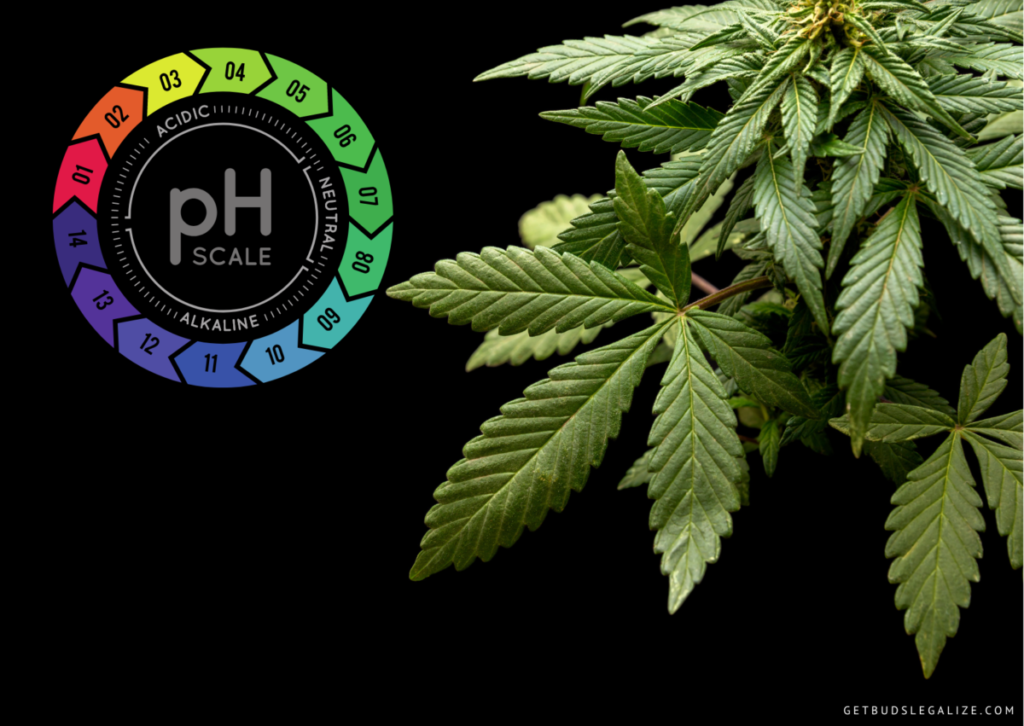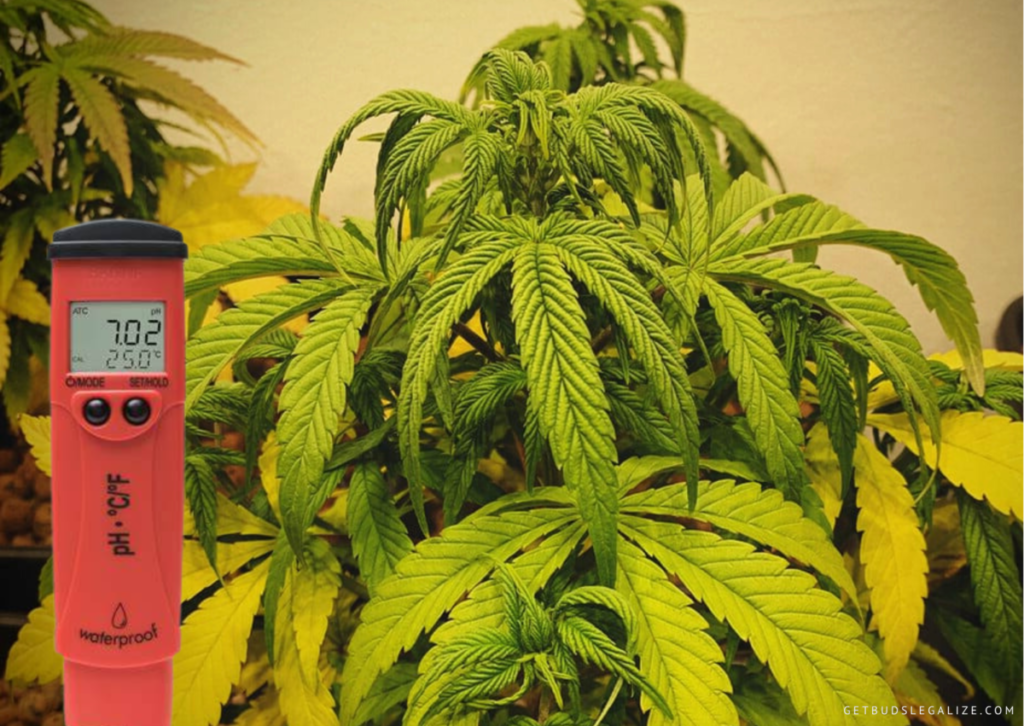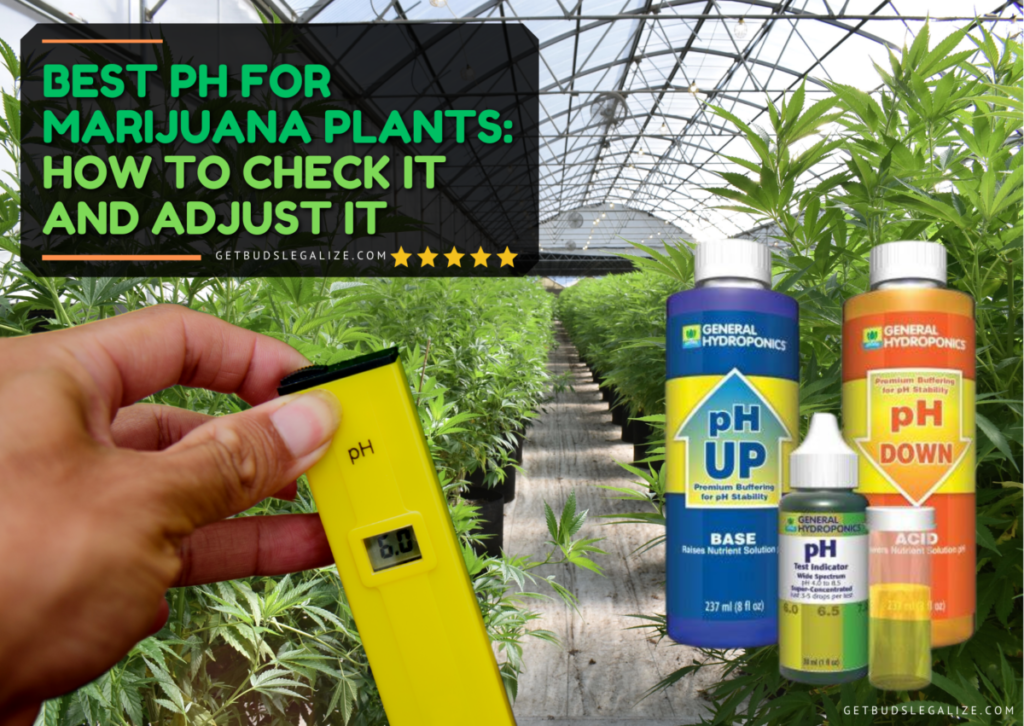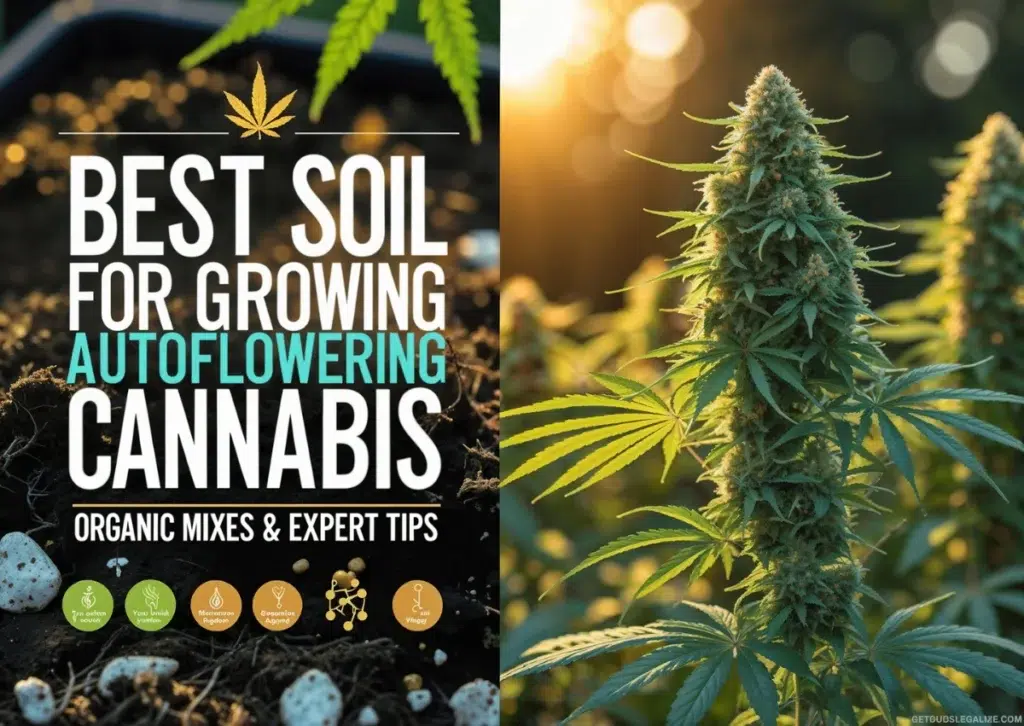What is the Best PH for Marijuana Plants and How Does It Affect Their Growth?
If you are a cannabis grower, you might have heard about the importance of pH for your plants. But what exactly is pH and how does it affect your cannabis cultivation? In this blog post, we will explain what pH is, what is the optimal pH range for cannabis in different growing mediums, why pH matters for nutrient uptake and plant health, and how to measure and adjust the pH of your cannabis grow.
What Does Soil pH Mean?
PH is a measure of how acidic or alkaline a substance is and ranges from 0 to 14, where 7 is neutral, anything above 7 is alkaline, and anything below 7 is acidic. The pH of soil affects the availability of nutrients and minerals for plants, as well as the activity of beneficial microorganisms and enzymes. Different plants prefer different soil pH levels, depending on their native environment and adaptation.
If the soil pH is too low or too high, some nutrients become unavailable or toxic for the plants, leading to nutrient deficiencies or excesses, which can cause stunted growth, yellowing leaves, poor bud formation, and reduced yields.
What does Water pH Mean?
The water PH is another factor that affects the health and performance of your cannabis plants and is the measure of how acidic or alkaline your water source is.
The water you use to irrigate your plants can have a significant impact on the pH of your growing medium, especially if you are using soilless or hydroponic systems. Maintaining a correct pH for your cannabis plants ensures optimal nutrient availability and uptake, preventing future problems.
Why is pH Important for Cannabis Plants?

Cannabis plants need a certain range of pH to absorb all the nutrients they need from the soil or water. Getting the pH right will provide you with optimal growth and excellent yields.
The benefits of maintaining the perfect pH for your plants include:
1. Preventing nutrient lockout: Nutrient lockout occurs when your plants cannot absorb the nutrients they need from their environment, even if they are present. This can happen when the pH is too low or too high for your growing medium, making some nutrients unavailable or toxic for your plants. The nutrient lockout can cause nutrient deficiencies or excesses, which can manifest as yellowing leaves, brown spots, curling tips, wilting stems, poor bud formation, and reduced yields.
2. Optimizing plant health: A healthy cannabis plant needs a balanced diet of micro and macronutrients, as well as trace minerals and organic matter. When the pH is within the optimal range for your growing medium, your plants can access all these elements and use them efficiently for their growth and development. A healthy plant will have strong roots, lush green foliage, vigorous branching, abundant flowers, and high-quality buds.
3. Saving money on fertilizers: Fertilizers are expensive and can be wasteful if your plants cannot use them properly due to improper pH values. By maintaining the best pH value for your cannabis plants, you will ensure that they can utilize all the nutrients you provide them with minimal waste or runoff. This will save you money on fertilizers and also reduce the environmental impact of your growth.
What is the Ideal pH for Marijuana?
The best level of pH for growing marijuana depends on whether you are growing in soil or hydroponics. Soil is a natural medium that contains organic matter and microorganisms that help buffer the pH level and provide nutrients to your plants. Hydroponics is an artificial medium that contains no organic matter and requires precise control of the pH level and nutrient solution.
The optimal pH fluctuations for growing cannabis in soil are between 6.0 and 7.0. This range allows for most of the essential nutrients to be available for your plants. However, some soils may have a naturally higher or lower pH level due to their composition or location. You may need to amend your soil with lime (to raise the pH) or sulfur (to lower the pH) to achieve the ideal range.
Conversely, in hydroponics, the optimal pH value for growing cannabis is between 5.5 and 6.5. This range allows for maximum availability and uptake of nutrients by plants. However, some hydroponic systems may have different requirements depending on the design and components.
PH Nutrient Uptake Chart for Cannabis:
Different nutrients are more or less available at different pH levels, as shown in the table below:
| NUTRIENTS | Minimum pH | Maximum pH |
| Nitrogen (N) | 5.5 | 7.5+ |
| Phosphorus (P) | 6.2 | 7.2 |
| Potassium (K) | 5.4 | 7.5+ |
| Calcium (Ca) | 6.5 | 7.5+ |
| Magnesium (Mg) | 5.8 | 7.2 |
| Sulfur (S) | 5.4 | 7.5+ |
| Copper (Cu) | Under 5 | 7.2 |
| Iron (Fe) | Under 5 | 7.2 |
| Manganese (Mn) | Under 5 | 7.5+ |
| Molybdenum (Mo) | 5.8 | 7.5+ |
| Zinc (Zn) | 5.0 | 7.1 |
As you can see, cannabis plants need a slightly acidic pH to access all the nutrients they need for healthy growth. If the pH is too low or too high, some nutrients will become locked out and unavailable for the plants, leading to deficiencies and other problems.
What Are the Causes of pH Imbalances?

PH imbalances can occur for various reasons in your cannabis growth. Some common causes of pH imbalances include:
- Using poor quality water: Tap-water or well-water can have high or low pH levels depending on where you live and how it is treated. Some water sources can also contain high levels of chlorine, fluoride, salts, metals, or other contaminants that can affect the pH of your growing medium and harm your plants.
- Using poor quality soil: Soil can have different pH values depending on its origin and composition. Some soils can be naturally acidic or alkaline due to their mineral content or organic matter content. Some soils can also be contaminated with chemicals. pH imbalances can have negative effects on your cannabis plants’ health and yield.
What Are The Symptoms of pH Imbalances?
pH imbalances can affect cannabis plants’ health and yield. Some of the symptoms of pH imbalances are:
- Slow growth: If the pH of your growing medium is too high or too low, your plants will have trouble absorbing nutrients, which will stunt their growth and development.
- Yellow leaves: One of the most common signs of pH imbalance is the yellowing of the leaves, especially the older ones. This indicates a lack of nitrogen, which is essential for photosynthesis and plant health.
- Purple stems: Another symptom of nutrient deficiency due to pH imbalance is the purple or reddish coloration of the stems and petioles. This is usually caused by a lack of phosphorus, which is vital for flowering and resin production.
- Decreased water absorption: When the pH of your growing medium is too acidic or too alkaline, it can affect the water uptake of your plants. This can lead to wilting, drooping, or curling of the leaves, as well as reduced transpiration and photosynthesis.
- Small flowers: One of the most noticeable effects of pH imbalance on your cannabis plants is reduced flower size and quality. If your plants are not able to access the nutrients they need for bud formation, they will produce smaller, less potent, and less aromatic flowers.
These symptoms are caused by a nutrient lockout, which means that the plant cannot take in nutrients from the soil or water because the pH level is too high or too low.
To Avoid pH Imbalances, you should:
- Test the pH of your water and soil regularly: You can use a pH meter, pH strips, or pH drops to measure the pH of your water and soil. Ideally, you want to keep the pH of your water between 6.0 and 7.0 and the pH of your soil between 6.0 and 7.0 for optimal nutrient uptake and plant health.
- Adjust the pH of your water and soil as needed: You can use pH up or pH down products to raise or lower the pH of your water and soil. You should always follow the instructions on the label and use small amounts at a time to avoid overcorrection. You should also retest the pH after each adjustment to make sure it is within the desired range.
- Use high-quality water and soil: You should avoid using tap water or well water that has high or low pH levels or contains harmful contaminants. You should use filtered water, distilled water, rainwater, or reverse osmosis water instead. You should also use organic soil that has a balanced pH level and contains beneficial microorganisms and nutrients for your plants.
Understanding and Preventing Nutrient Lockout
Nutrient lockout is one of the most common problems caused by pH imbalances. It happens when the nutrients in the soil or solution are not in a form that can be taken up by the plant roots. This can be due to several factors such as:
- The pH level is too high or too low for the specific nutrient
- The presence of competing ions that bind with the nutrient and make it unavailable
- The presence of salts that build up in the soil or solution and interfere with nutrient uptake
- The presence of organic matter that decomposes and releases acids or bases that alter the pH level
To prevent a nutrient lockout, you need to monitor and adjust the pH level of your soil or solution regularly. You also need to flush your soil or solution periodically with plain water to remove any excess salts or organic matter that may accumulate over time.
How to Measure and Adjust the pH of Cannabis Plants

To measure the pH of your growing medium and water, you will need pH meters:
- A pH pen tester is a digital device that measures the pH of a solution by inserting a probe into it. It is accurate, easy to use, and reusable, but it requires regular calibration and maintenance.
- A pH drop is a liquid that changes color when added to a solution according to its pH level. It is cheap, simple to use, and reliable, but it can be hard to read the exact color and it can be affected by the color of the solution.
- A pH strip is a paper that changes color when dipped into a solution according to its pH level. It is inexpensive, convenient, and disposable, but it can be inaccurate, inconsistent, and difficult to read.
To adjust the pH of your water or nutrient solution, you will need:
- An organic pH adjuster is a natural substance that lowers or raises the pH of a solution by adding organic acids or bases to it. Some examples are lemon juice, vinegar, baking soda, or dolomite lime.
- A chemical pH adjuster is a synthetic substance that lowers or raises the pH of a solution by adding chemical acids or bases to it. Some examples are phosphoric acid, nitric acid, potassium hydroxide, or sodium hydroxide.
For a correct measurement, you will need to follow these steps:
- Measure pH: Turn on the pH tester and insert the probe into the solution you want to test. Wait for a few seconds until the reading stabilizes and note down the pH value on the display.
- Adjust PH levels: If the pH is too high or too low for your purpose, you can add an acid or a base to the solution to change it. For example, you can add vinegar (an acid) to lower the pH or baking soda (a base) to raise it. Add small amounts at a time and measure the pH again until you reach the desired level.
- Stir well and wait for a few minutes for the solution to stabilize.
- Testing pH again: Repeat the first step and check if the pH is within your target range. If not, you may need to adjust it further or use a different solution.
- Use the adjusted solution to water your plants or feed your system.
It is important to monitor and adjust the pH regularly as it can change over time due to various factors such as temperature, evaporation, microbial activity, or plant uptake. Maintaining the optimal pH for cannabis will ensure that your plants can absorb all the essential nutrients they need for healthy growth and high yields.
Cannabis pH — FAQs
PH is a measure of how acidic or alkaline a solution is on a scale from 1 to 14. Cannabis plants can only absorb nutrients within a certain pH range, depending on the growing medium. If the pH is too high or too low, plants can suffer from the nutrient lockout, deficiencies, or toxicity.
The optimal pH range for growing cannabis in soil is between 6.0 and 7.0. This allows the plants to access all the essential macronutrients and micronutrients they need for healthy growth and development. Soil also acts as a buffer that can help stabilize the pH and prevent drastic fluctuations.
The optimal pH range for growing cannabis in hydroponics or soilless media is between 5.5 and 6.5. This is slightly lower than soil because these media have the less buffering capacity and require more precise pH management. Hydroponic and soilless systems also allow for faster nutrient uptake and higher yields, but they are more sensitive to pH imbalances.
You can measure the pH of your water and nutrient solution using a digital pH meter, a pH test kit, or pH indicator strips. You should always test your water before adding any nutrients, and then test your nutrient solution after mixing it. To adjust the pH, you can use commercial pH up or down products, or natural alternatives such as lemon juice (to lower pH) or baking soda (to raise pH). You should always add small amounts of pH adjusters and retest until you reach the desired level.
You should check and adjust the pH of your water and nutrient solution every time you water or feed your plants. You should also monitor the pH of your runoff water or reservoir to detect any changes or problems. The pH of your water and nutrient solution may vary depending on factors such as water quality, nutrient brand, concentration, temperature, and evaporation.
The best pH for marijuana in the soil is between 6.0 and 7.0, which allows for optimal nutrient availability and uptake by the roots. The best pH for marijuana in hydroponics or coco coir is between 5.5 and 6.5, which is slightly more acidic than soil and prevents nutrient lockout.
The best EC for marijuana should be between 1.0 and 2.0 mS/cm for soil and between 1.2 and 1.8 mS/cm for hydroponics. EC is a measure of how electrically conductive a solution is, and it reflects the amount of dissolved salts and minerals in the water. If the EC is too high, the plant may experience salt stress and reduced water uptake. If the EC is too low, the plant may not receive enough nutrients for optimal growth.
The optimal pH for germination is between 6.0 and 7.0. The seeds of cannabis will not germinate in water that is too salty or too fresh. A pH meter or a reactive pH test kit can help you measure and adjust the pH of your water. You can also use distilled or purified water to avoid contaminants. Some growers add a tablespoon of hydrogen peroxide to the water to improve germination.

















